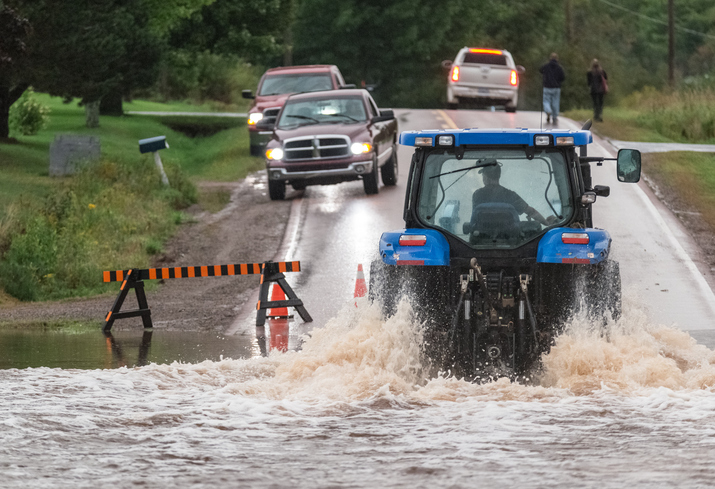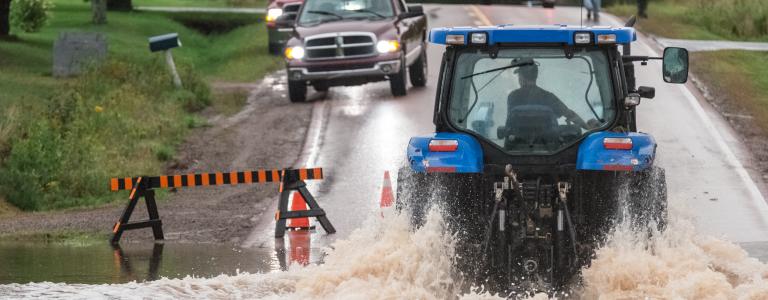Canada Must Do More to Adapt to Climate Change, Environment Commissioner Says
Canada’s Commissioner for Environment and Sustainable Development, Julie Gelfand, just called on the federal government to do more to prepare Canadians for the impacts of climate change. We explore how that needs to happen.
Canada’s Commissioner for Environment and Sustainable Development, Julie Gelfand, just released a report calling on the federal government to do more to prepare Canadians for the impacts of climate change.
“The federal government is not prepared to deal with the impacts of climate change that we are all feeling right now,” Commissioner Gelfand told the press on Tuesday.
The report, Adapting to the Impacts of Climate Change, says that some progress did take place under the Pan-Canadian Framework on Clean Growth and Climate Change, but that a government-wide approach to adapting to climate change is still lacking.
“The report was a significant step, I think, in terms of highlighting the need for the federal government to be taking adaptation to climate change more seriously,” says Jo-Ellen Parry, IISD’s lead on climate change adaptation.
“We have seen some positive progress in recent years with the Pan-Canadian Framework process including the adaptation component within it,” Parry continued. “However, the commissioner’s report highlights that the federal government still has a long way to go to better understand how climate risks will impact its operations and make plans for addressing those risks.”
“The federal government is not prepared to deal with the impacts of climate change that we are all feeling right now,” Commissioner Gelfand told the press on Tuesday.
The commissioner’s report found that 14 departments have not assessed their climate change related risks.
“One of the things [the federal government] needs to do is go through a climate risk screening process for all of their operations,” explains Parry. “There’s a need to assess how the changes in our climate that are anticipated to occur—such as increases in temperature, changes in precipitation patterns, sea level rise along our coasts—could have impacts in terms of federal capacity to deliver benefits for Canadians.”
Parry says the next step is understanding what actions can be taken to reduce those risks and then proceeding to actually implement those actions that have been prioritized.

At the international level, many countries are taking action to adapt to climate change. One study found that of the 162 nationally determined contributions submitted to set out countries’ goals toward fulfilling the Paris Agreement, 87 per cent included a goal for adaptation.
Parry says there are many good examples for Canada to draw on.
“Under Barack Obama’s administration, there was a call for all federal agencies in the United States to undertake a comprehensive review of their climate risks and to develop adaptation plans in response to those risks,” she says. “They’ve also tied the provision of disaster assistance to having a disaster risk mitigation plan.”
Parry also notes that many low-income countries are making significant strides toward building their resilience to climate change despite limitations on their resources.
There’s a need to assess how the changes in our climate that are anticipated to occur could have impacts in terms of federal capacity to deliver benefits for Canadians.
“You can also look to any number of developing countries throughout the world that are in the process of developing national adaptation plans,” she says. “This is the process by which they’re bringing together the best knowledge that they have about their climate risks and engaging stakeholders within and outside of government to develop plans for how it is that they will mitigate those risks, and developing strategies for their implementation.”
IISD hosts the National Adaptation Plan (NAP) Global Network, which provides support and documents lessons from developing countries that are engaged the NAP process.
“There are lessons there that Canadian governments, at the federal level but also at the provincial level, could learn from,” concludes Parry. “We’re hoping that there will be greater opportunity in the future for this type of knowledge sharing between countries and between regions.”
You might also be interested in
For Nature-Based Solutions to Be Effective, We Need to Work with Indigenous Peoples and Local Communities
Nature-based solutions have been praised as a promising approach to tackling the twin crises of climate change and biodiversity loss. But some Indigenous Peoples and local communities are questioning the legitimacy of the concept and what it symbolizes. It is time to listen to what they have to say.
How Can We Work With Nature to Tackle Drought and Desertification?
Drought is one of the most devastating and pervasive challenges exacerbated by climate change. However, we can work to reduce its effects through nature-based solutions for land restoration and climate-smart agriculture.
Canadian Youth Want to See Stronger Climate Policy in 2024
IISD takes a look at the Canada's Local Conference of Youth demands for policymakers after COP 28.
Tree Planting for Climate Resilience in Freetown, Sierra Leone
This assessment presents the economic valuation of tree planting efforts in Freetown, Sierra Leone, including planting costs, added benefits, and avoided costs.
